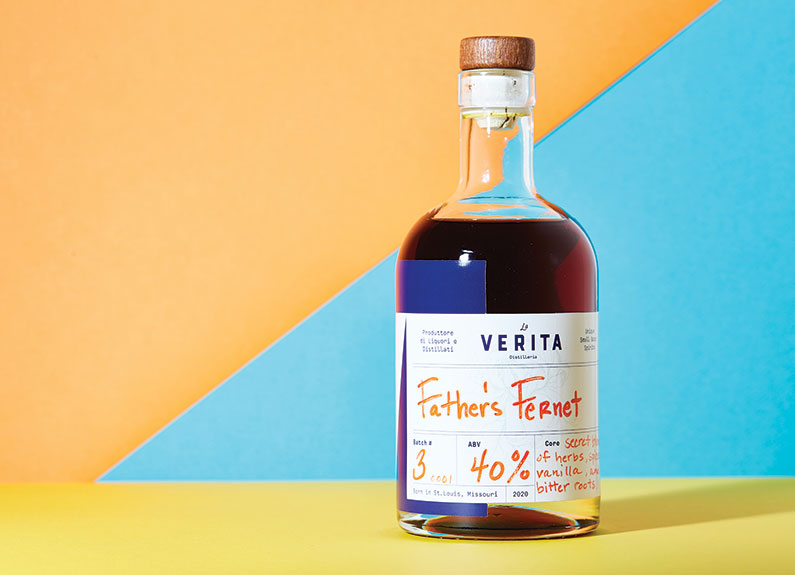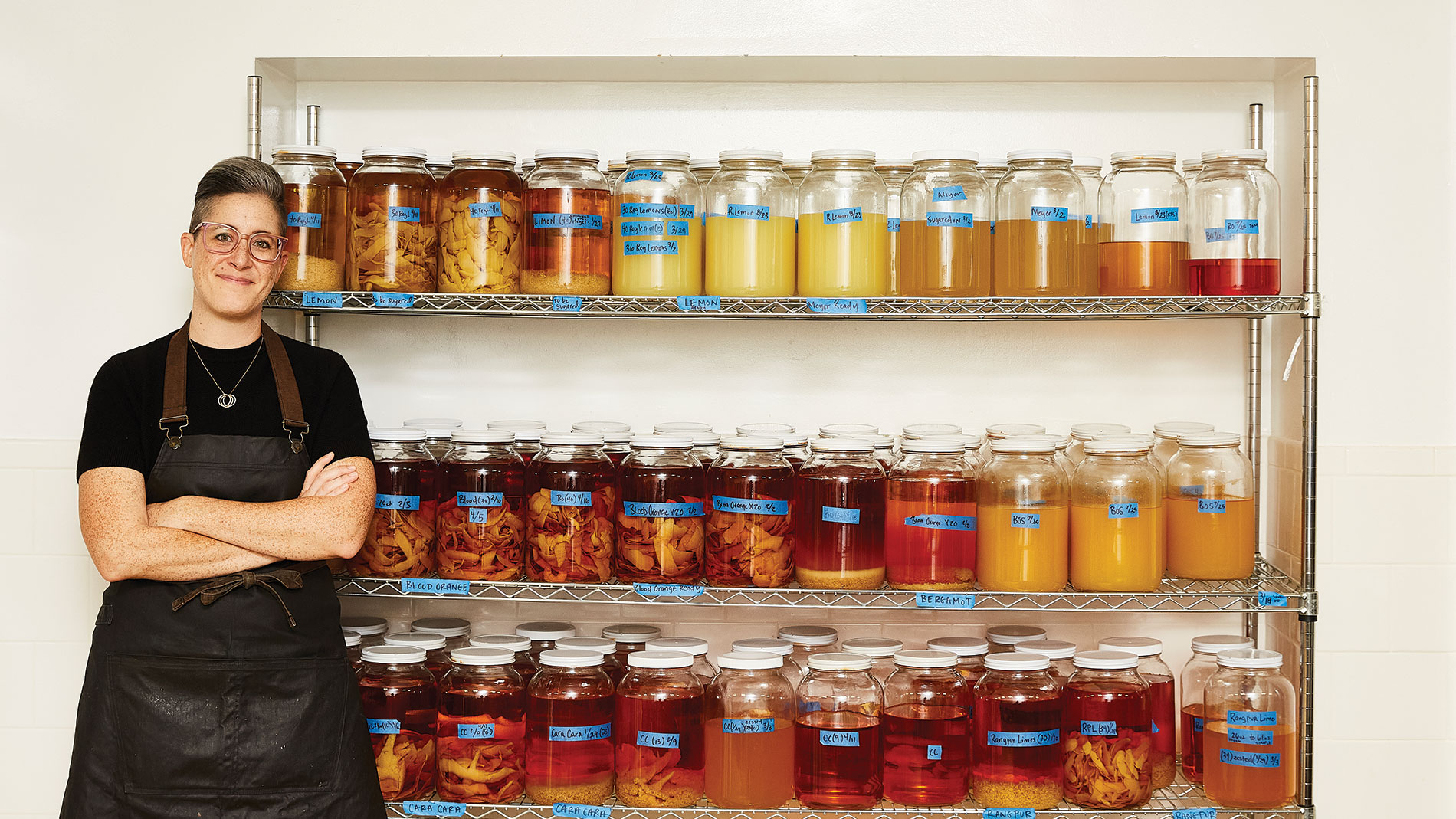The (not so) bitter truth about amaro
Amaro is good for you; or at least there are things in it that are thought to be good for you. Most Italians innately know this gospel, but many Americans have only realized it in the past decade. Meaning “bitter” in Italian, amaro is a bittersweet, herbal liqueur that’s traditionally enjoyed before or after dinner to aid in digestion and calm the palate. Popular amari brands include Campari, Cynar, Fernet-Branca (though some claim fernet is its own category), Montenegro, Averna and Nonino, most of which you can drink in cocktails, spritzes or neat.
“Particular bitter roots and herbs in high percentages can be dangerous, like quinine, but the right amount, and we only use a tiny amount, is a digestive agent,” explained Meredith Barry, head of beverage development at Niche Food Group. “All of these roots and herbs have healing properties at some level, in moderation.”
Our bodies want to avoid bitter things because they could potentially be toxic, so amaro spurs the digestive system into gear, helping us break down food more quickly. That’s why most good Italian restaurants have a digestif menu that comes alongside the list of pastries, cakes and frozen treats you get at the end of a meal. If you haven’t indulged before, order a glass of Sfumato or Branca Menta after your pasta or pizza feast, and you’ll see the light.
Comparatively few Americans are producing bitter liqueurs like amaro, but Italy has been doing it for centuries. “These are all things that Italians do in their own homes – even amari,” Barry said. “Those things started off just as families making it. It’s more of a process of steeping [than distilling].” How does Barry know this? For one, because she learned about liqueur from her grandmother, who made a ton of the stuff. “My grandmother has always made limoncello and arancello [blood orange liqueur],” she said. “I remember talking to her about it, because she had it in the freezer, so when I was of age I could just taste it.” Barry observed her technique and asked questions about the process. Those experiences would guide her as she grew up, established herself as a lauded bartender and began to fantasize about producing spirits of her own.

Enter Niche Food Group co-owner Gerard Craft, whose father’s palate was far ahead of the curve. “My dad has been one of Fernet-Branca’s largest fans forever, despite most people thinking it’s horrendous,” he said, laughing. “That was obviously before the huge rise in popularity.” On Craft’s 13th birthday, his father took him to a Calvados distillery in Normandy, France. Years later, on his trips to Italy, he learned about the colossal landscape of bitter liqueur. “You go to these mountain towns and everyone’s kind of got their own mountain herb-mountain root amaro, with varying levels of deliciousness,” he explained. After becoming an award-winning chef with the resources to start making his own spirits, Craft’s path converged with Barry’s, who started working for Niche in early 2020 – just before Covid hit with full force.
Following some consulting work for the Angad Arts Hotel and helping other Niche restaurants transition into the pandemic, Barry was looking for a new challenge. “I got Taste cleaned up and broken down, which was sad, because I’d just started. It was hard, like mourning a little bit,” she said. Soon after, Craft approached Barry to start a new project called La Verita Distilleria, which would focus on the kinds of liqueurs they’d both grown up loving. “In September [of last year] he was like, ‘Let’s do this thing,’” Barry recalled. “He was like, ‘I’ve always wanted to try making Fernet and Nocino [a bittersweet liqueur made from walnuts] and limoncello.’” Barry began by circling back to her grandmother’s recipes and techniques, which provided strong footing and a path forward. Asking her grandmother’s learned limoncello advice, Barry discovered that using both lemon zest and lemon peels for limoncello was an important secret. “At the end of the day, she was totally right, and I never should have questioned her,” Barry said with a big laugh.
But Barry’s research and development quickly propelled her far beyond her grandmother’s recipes. For limoncello – a lemon-steeped, sugary digestif – it took a number of batches for her to figure out the right ratios and techniques. Building on her grandmother’s ideas, she blended lemon zest with lemon peel in different batches until she got it right; she and Craft also experimented with different kinds of lemons. “We thought that Meyer lemon tasted better with a bit of regular lemon in there – the regular lemon was too lemon drop-y,” Barry explained. They eventually arrived at a drink they really enjoyed.
There isn’t much of a road map when it comes to making amaro; in a time where one can find recipes for everything from beer and wine to kombucha online, bitter liqueurs are still fairly mysterious, with most producers keeping their cards close to the chest. “It’s all fairly secret. They don’t really tell you the specifics and the details. I suppose that’s why people aren’t making it,” Barry said. But she hasn’t let that stop her from finding her own way.

Barry now understands that while making amaro isn’t actually that difficult, coming up with the right recipes is a whole different ballgame. “With the amari, I did 25 tests. If I did number 16 and that was OK, I did test numbers 16.1 and 16.2,” she explained. “17.5 was working killer, so I kind of meddled around with that and then made 19, which is our favorite so far.” The process has forced Barry to become more organized and detail-oriented, turning her into a master note-taker. “I lost one recipe and I went flying,” she said. “I was like, ‘What the fuck!’” Since not every test is an improvement, she’s had to learn to be meticulous about remembering the roads she’s travelled.
So what’s actually going on when you make an amaro? You start by infusing bittering agents – roots and herbs – into alcohol, which is itself a multi-tiered process. “I figured out how much time they really needed, the bittering agents,” Barry commented. “Everything takes different amounts of time, like the herbs. And the bitters expand over time. You can’t just throw everything into one batch and call it a day.” Then, she prepares herbs and spices, toasting baking spices like cinnamon, cardamom, star anise and pink peppercorn. “Juniper is really neat, especially when you’re trying to recreate Alpine flavors – it actually brings a lot of citrus notes, because it’s been dried and aged,” she said. In Italy, regional amari depend on what herbs are available where you live, but in St. Louis, you’re probably not going to find Alpine herbs like Artemisia spicata and mutellina.
At the same time, Barry also makes a tea with herbs like peppermint, spearmint and mint. “It’s a blend of fresh herbs to the already dried herbs, because they give all different kinds of flavor,” she said. These steps, too, require a huge amount of testing and tampering in order to create the right balance of flavor because having such a high number of ingredients can create a volatile product. “Sometimes it can be too tannic, while other times it has just enough of the tannins to pull through. Sometimes I feel like I’m not satisfied,” Barry said. Beyond flavor, some herbs create heat when combined, changing the temperature of the brew; the decision of glass vs. steel for aging is also an important consideration, because, as Barry has found, resting the tea in steel can mellow it out too much. Time is also a major ingredient in spirits like this. “It’s a patience process, because you can taste the tea once it’s sugared, and you can taste it three months later and it’s changed remarkably. It’s got an evolution and you hope it’s what you want. Sometimes I look at them and think, ‘Come on, little baby, please work for me,’” she said.

Many of the experiments have felt like failures to Barry and Craft, especially the early ones. “I had moments that were absolutely fucking terrible,” Barry said. “I had ones that were like Malort but worse.” But the losses eventually turned into wins. “I had a moment where Gerard came in and tasted it, and we spooned it and we were like, ‘Yeah!’ I was just surprised,” she said. “Finally, I did this. I’m happy with it in some sort of way.” Even her genepy, a liqueur featuring Alpine herbs, surprised her. “The genepy was a happy accident that happened while trying to make my first round of fernet. I don’t want to toot my own horn, but I was like, ‘This is better than Dolin Genepy,’” she said. “I never thought I would get it that way.” Craft was just as surprised. “We were like, ‘This is amazing.’ It’s kind of a knockout, to be honest,” he added. Now, the genepy is one La Verita’s most popular items.
So far, they’ve sold everything from fernet and limoncello to genepy and a blood orange cordial; their Nocino was so popular that it sold out. Barry expects a new batch to be available during the winter. In the future, the duo wants to grow the brand to offer more products and a higher volume, which will require La Verita to shift its business model, since what they’re currently selling is actually considered ready-made cocktails rather than spirits. “If we go forward with it, it seems like something else,” Barry mused. “For now, we’re just going to keep doing this, and keep researching and developing, putting a little bit on the shelf. I will keep going as long as Gerard wants to keep going – it’s his baby, and I’m just lucky to keep experimenting.” Craft wants to keep the project going as well.
In La Verita, Barry and Craft have found a unique partnership and a new story forged in both family tradition and the desire to create something original. Supporting one another through failures and successes alike, they are figuring it out together. “I keep on trying to get vermouth, but I’ll be honest, I keep fucking it up,” Barry said, dejectedly. But the backing of Craft and Niche has taught her new lessons in perseverance. Now, she’s learning how to be OK with those failures. “When you mess up that many times, you definitely start to question yourself. But Gerard’s been really great. He’s like, ‘That’s OK,’” she said. “I need to hear that it’s going to be OK.” It’s something we all need to hear from time to time.
Tags : Cocktails, Guide to Drinking






